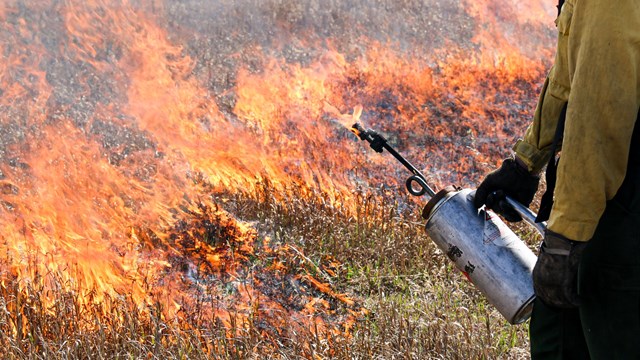
NPS Photo FireWiseBoth here in the park and in communities throughout the country, developed areas—particularly those surrounded by forests and wildlands—must take steps to reduce the risk that fire can pose. Creating defensible space around structures and making them less flammable can help them survive a wildfire, and these practices can both keep firefighters safe and help them protect the structure. FireWise provides a guide to these practices, which include thinning vegetation surrounding buildings, pruning or removing any trees or shrubs that touch the structure, enclosing eaves and vents with mesh, and maintaining fire-resistant roofs (or treating shingle roofs to make them more fire resistant). Explore this list to find your state’s FireWise liaison and learn more. Since the mid-1990s, Grand Teton National Park has put significant effort into creating defensible space around structures within the park. These fuels reduction projects have been implemented in most developed areas, and they played a large role in allowing the Berry Fire to pass through Flagg Ranch without losing any major structures. Learn more in the Berry Fire story map. Ready, Set, GoBeing prepared for wildfire hazards is critical, particularly for residents in the Wildland Urban Interface (WUI), which is a transition zone between wildlands and developed areas. The “Ready, Set, Go” program aims to help residents and their homes get ready for that threat. It lays out three stages:
Contact your local Fire Warden or County Emergency Manager to learn more about wildfire preparation and safety within your own community. 
Current Fire Information
Learn where to find updates about current fires in Grand Teton. 
Fire Media
Explore videos and story maps to learn more about fire in Grand Teton. 
Wildland Fire Homepage
Return to the wildland fire homepage to explore other pages. |
Last updated: October 17, 2019
